Key climate solutions have been advancing considerably faster than anyone expected just a few years ago thanks to aggressive market-based deployment efforts around the globe. These solutions include such core enabling technologies for a low-carbon world as solar, wind, efficiency, electric cars, and battery storage.
That’s a key reason almost everything you know about climate change solutions is probably outdated. In Part 1 of this series (Note 1), I discussed other reasons. For instance, climate science and climate politics have moved unexpectedly quickly toward a broad understanding that we need to keep total human-caused global warming as far as possible below 2°C (3.6°F) — and ideally to no more than 1.5°C. But the media and commentariat generally have not kept up with the science or solutions and their utterly game-changing implications.
This post will focus on the light-speed changes in clean energy technology that have left even the most informed journalists and experts behind, which in turn means the public and policy-makers are receiving outdated information.
The Clean Energy Miracle Is Already Here
Consider solar power. In recent days, both the Council on Foreign Affairs (Note 2) and the New York Times (Note 3) have published claims that were literally out-of-date the instant they were put on the internet.
Last week, Varun Sivaram, a smart young physicist (Note 4) who has worked on advanced solar, wrote this on the Council on Foreign Relations’ “Energy, Security, and Climate” (see Note 2):
Indeed, just this week, a Saudi-backed consortium placed an astonishingly low bid to build a solar farm in Dubai for only 3¢/kWh, half the local price of power from natural gas. Existing technologies may surprise us, as Dr. Romm suggests, especially if this bid turns into a contract and Dubai’s prices can be replicated elsewhere in the world. (I am skeptical, though, of the latter possibility).
This was part of a response to my critique (Note 5) of a piece Sivaram coauthored for Foreign Affairs (Note 6) last month. That piece had argued, “trying to create a zero-carbon power grid with only existing technologies would be expensive, complicated, and unpopular.” I argued that, as vital as R&D is, we don’t need breakthrough energy miracles to create a zero-carbon grid.
I argued, to use Sivaram’s words, “Existing clean energy technologies have fallen in cost and will continue to do so as a function of their deployment, which implies that they are sufficient to achieve ambitious climate goals.” (Though I wouldn’t have used the word “sufficient” but would have reiterated that we’re talking about the existing technologies simply getting steadily better over the next two decades much as they have in the last two.)
The premiere New York Times blogger on climate change, Andy Revkin, then posted Sivaram’s response in its entirety on NYTimes.com (see Note 3). Here’s the thing, though: As highly informed as Revkin and Sivaram are, what they published was instantly out of date.
The Dubai price for solar had already been replicated elsewhere in the world — and in fact it has also been replicated elsewhere for wind! Here is the key chart from Bloomberg New Energy Finance (BNEF) Chairman Michael Liebreich, one of the world’s leading experts on the state of emerging clean energy. Note 7.
Last month, Liebreich devoted his entire keynote address at BNEF’s annual conference to debunking the energy miracle myth that Bill Gates has popularized. Note 8. Indeed his data- and chart-filled analysis — pointedly titled “In Search of the Miraculous” — explained in great detail how the energy miracle is already here: solar and wind and LED lighting and electric cars and advanced batteries and smart grids!
One of Liebreich’s themes is what he calls “The March of the Price Signal” — the rapid expansion of global deployment programs, especially market-based mechanisms such as renewable portfolio standards and reverse auctions (Note 9). The March of the Price Signal has led to astounding sustained price drops characteristic of experience or learning curve.
So I think it’s pretty clear that, yes, “Existing clean energy technologies have fallen in cost and will continue to do so as a function of their deployment.” Indeed, the International Energy Agency wrote a whole report making that exact point back in the year 2000, titled, “Experience Curves for Energy Technology Policy.” Note 10. I’ll discuss that must-read report in more detail in a later post, but its main conclusion is always worth repeating:
For major technologies such as photovoltaics, wind power, biomass, or heat pumps, resources provided through the market dominate the learning investments. Government deployment programmes may still be needed to stimulate these investments.
In other words, if you want to keep improving the cost and performance of the key low carbon technologies, the marketplace is going to provide the dominant amount of those funds. The best way government can accelerate the process is through deployment programs.
I do understand why so many people think existing technology can’t get us to a carbon-free future and that we we need multiple energy breakthroughs or energy miracles. Breakthroughs are sexy and get a lot of attention, whereas deployment efforts are not and do not.
The mainstream media generally has a bias towards bad news — if it bleeds it ledes, goes the saying. (Note 11). You have to wait an awfully long time on the evening news — or indeed most news shows and media outlets — to see “good news.” As a result, they rarely cover the solar energy “miracle” or the wind energy “miracle” because they think they already did that story years ago.
Almost everybody is behind the curve — literally. The U.S. Energy Information Agency (EIA) consistently underestimates renewables growth in its projections. Note 12.
Solar and wind have been continuously outperforming expectations for so long that even the International Energy Agency (IEA) — a world leader in analyzing clean energy trends — itself keeps underestimating what’s about to happen year after year, as BNEF chair Liebreich explained in his keynote. “This trend gets underestimated persistently. The IEA forecasts for wind and solar over years have gone up and up and up,” Liebreich said. “In the case of wind, five times — five-fold increase. In the case of solar, fourteen-fold increase since the year 2000.”
Also, while Sivaram and Revkin imply that only solar energy might vindicate my assertion about how the unexpectedly rapid deployment-driven advances in clean tech are game-changing for clean energy policy, in fact it’s clear from BNEF and others that this is true across the board. As but one example, the charts above clearly show the impact they’ve had on wind power.
The Electric Car And Battery Revolution
But it may be the arena of electric batteries and electric vehicles (EVs) where deployment-driven advances have overturned basic assumptions most people had just a few years ago. As I’ve noted before, in 2013, the IEA estimated (Note 13) EVs would achieve cost parity with gasoline vehicles when battery costs hit $300 per kWh of storage capacity, which the IEA said would happen by 2020. Then, last spring (Note 14), a detailed analysis in Nature concluded that as of the end of 2014, “the cost of battery packs used by market-leading BEV manufacturers are even lower, at US$300 per kWh.”
BNEF’s Liebreich makes a similar point in his talk, what he calls “The Miracle Of Musk.” That’s a reference to the CEO of Tesla, a company that almost single-handedly turned around the moribund EV business, and whose Gigafactory promises to continue providing downward pressure on EV prices. Liebreich says that, starting from just 2010, “The price of batteries is coming down 77 percent by the time the Gigafactory and other battery manufacturers scale up in 2018.”
Here’s the topper: The EV battery market appears to be moving so fast that even BNEF — which is at the cutting edge of collecting and analyzing clean tech market data — itself appears to be underestimating what’s happening.
GM revealed last fall (Note 15) that the battery cell it is getting from the South Korean company LG Chem for its forthcoming all-electric Chevy Bolt will cost just $145 per kWh! This astounding price allows GM to offer its 200+ mile range EV later this year for a sticker price of $37,500 — before any state or federal tax credits are applied.
And GM says it expects that price will continue to drop, as it made clear in this chart:
The 2015 Nature study had concluded, “If costs reach as low as $150 per kilowatt hour this means that electric vehicles will probably move beyond niche applications and begin to penetrate the market more widely, leading to a potential paradigm shift in vehicle technology.”
The paradigm shift is here. One early sign is Tesla’s Model 3 — another affordable 200+ mile range EV (due in 18 months) — which had record-setting presales (Note 16) in its first weekend of $12 billion. Another sign is that Europe and China are placing enormous bets on both batteries and EVs, leading to exponential sales growth in those markets:
This EV and battery revolution is happening in real-time — so it’s not surprising that its implications have hardly been discussed in the mainstream media. This revolution is directly a game-changer for the speed of plausible CO2 reductions in the transportation sector. And it is directly a game-changer for the speed with which the grid can incorporate renewables and go carbon-free (without any need for breakthroughs or miracles) because:
• EVs can directly be used as a way of managing demand response and variability of solar and wind during the 90 percent plus of the time they aren’t being driven.
• The plummeting price of EV batteries means a plummeting price of batteries needed for electricity storage, as Musk has already shown with his Powerwall residential battery. Note 17.
• The surge in EVs means a surge in used or “second-life” batteries for electricity storage at truly disruptive prices, as I discussed here (Note 18).
Again, that’s the thing about existing technology — it can surprise you a lot faster than non-existing technology can. And time is of the essence for all who agree we must work as hard as possible to keep total global warming “to well below 2°C [3.6°F] above preindustrial levels,” a goal the major nations of the world unanimously adopted in December.
I remain as strong an advocate for increased funding of clean energy R&D as I have been for the past 25 years. But to avoid calamity, more aggressive deployment programs remain the sine qua non of climate policy.
Notes
Note 1. Joe Romm, “Almost Everything You Know About Climate Change Solutions Is Outdated, Part 1,” ClimateProgress (10 May 2016). thinkprogress.org/climate/2016/05/10/3776465/everything-you-know-climate-change-solutions-outdated/
Note 2. Varun Sivaram, “Beyond Climate Confusion: Why Both Energy Innovation and Deployment Matter,” Energy, Security and Climate, Council on Foreign Affairs (4 May 2016). blogs.cfr.org/levi/2016/05/04/beyond-climate-confusion-why-both-energy-innovation-and-deployment-matter/
Note 3. Andrew C. Revkin, “Young Analysts Press the Case for Innovation, and Tolerance, in Pursuing a Post-Carbon Energy Menu,” The New York Times (6 May 2016). dotearth.blogs.nytimes.com/2016/05/06/young-analysts-press-the-case-for-innovation-and-tolerance-in-pursuing-a-post-carbon-energy-menu/
Note 4. Varun Sivaram, Ph.D., linkedin www.linkedin.com/in/varunsivaram
Note 5. Joe Romm, “We Fact-Checked A High-Profile Article On Climate And Energy. It Wasn’t Pretty.” Climate Progress (21 April 2016). thinkprogress.org/climate/2016/04/21/3771123/foreign-affairs-non-existent-technologies/
Note 6. Varum Sivaram and Teryn Norris, “The Clean Energy Revolution: Fighting Climate Change With Innovation,” Foreign Affairs (May/June 2016). www.foreignaffairs.com/articles/united-states/2016-04-18/clean-energy-revolution
Note 7. Michael Liebreich, In search of the miraculous, Bloomberg New Energy Finance (5 April 2016). about.bnef.com/content/uploads/sites/4/2016/04/BNEF-Summit-Keynote-2016.pdf
Note 8. LIEBREICH STATE OF THE INDUSTRY KEYNOTE BNEF GLOBAL SUMMIT 2016, Bloomberg New Energy Finance about.bnef.com/video/liebreich-state-industry-keynote-bnef-global-summit-2016/
Note 9. Solar Energy Industries Association (SEIA), Reverse Auction Mechanism www.seia.org/policy/renewable-energy-deployment/reverse-auction-mechanism
Note 10. International Energy Agency, Experience Curves for Energy Technology Policy. www.wenergy.se/pdf/curve2000.pdf
Note 11. Libby Reinish, “No More Bleeding Ledes, Please,” freepress (10 Sept 2010). www.freepress.net/blog/10/09/10/no-more-bleeding-ledes-please
Note 12. Ben Jervey, “Renewable Energy Growth Blows EIA Forecasts Out of the Water, Again,” Resilence (March 2016). www.resilience.org/stories/2016-03-14/renewable-energy-growth-blows-eia-forecasts-out-of-the-water-again
Note 13. Clean Energy Ministerial, Electric Vehicles Initiative, International Energy Agency, Global EV Outlook: Understanding the Electric Vehicle Landscape to 2020 (April 2013). www.iea.org/publications/globalevoutlook_2013.pdf
Note 14. Joe Romm, “Electric Car Batteries Just Hit A Key Price Point,” ClimateProgress (13 April 2015). thinkprogress.org/climate/2015/04/13/3646004/electric-car-batteries-price/
Note 15. Jay Cole, “GM: Chevrolet Bolt Arrives In 2016, $145/kWh Cell Cost, Volt Margin Improves $3,500,” InsideEvs insideevs.com/gm-chevrolet-bolt-for-2016-145kwh-cell-cost-volt-margin-improves-3500/
Note 16. Joe Romm, “Tesla’s Model 3 Is Already Shattering Expectations,” ClimateProgress 6 April 2016). thinkprogress.org/climate/2016/04/06/3766982/next-apple-tesla-model-3-presales/
Note 17. Samantha Page, “Tesla Announces New Product To ‘Fundamentally Change The Way The World Uses Energy,’” ClimateProgress (1 May 2015). thinkprogress.org/climate/2015/05/01/3653015/tesla-announces-home-battery/
Note 18. Joe Romm, “Why Used Electric Car Batteries Could Be Crucial To A Clean Energy Future,” ClimateProgress (9 May 2016). thinkprogress.org/climate/2016/05/09/3775606/used-second-life-electric-car-batteries/
This article was orighinally published in ClimateProgress:
Joe Romm, “We Can Stop Searching For The Clean Energy Miracle. It’s Already Here.” ClimateProgress (12 May 2016) at thinkprogress.org/climate/2016/05/12/3776728/climate-change-solutions/
Joe Romm is a Fellow at American Progress and is the Founding Editor of Climate Progress, which New York Times columnist Tom Friedman called “the indispensable blog” and Time magazine named one of the 25 “Best Blogs of 2010.” In 2009, Rolling Stone put Romm #88 on its list of 100 “people who are reinventing America.” Time named him a “Hero of the Environment″ and “The Web’s most influential climate-change blogger.” Romm was acting assistant secretary of energy for energy efficiency and renewable energy in 1997, where he oversaw $1 billion in R&D, demonstration, and deployment of low-carbon technology. He is a Senior Fellow at American Progress and holds a Ph.D. in physics from MIT.


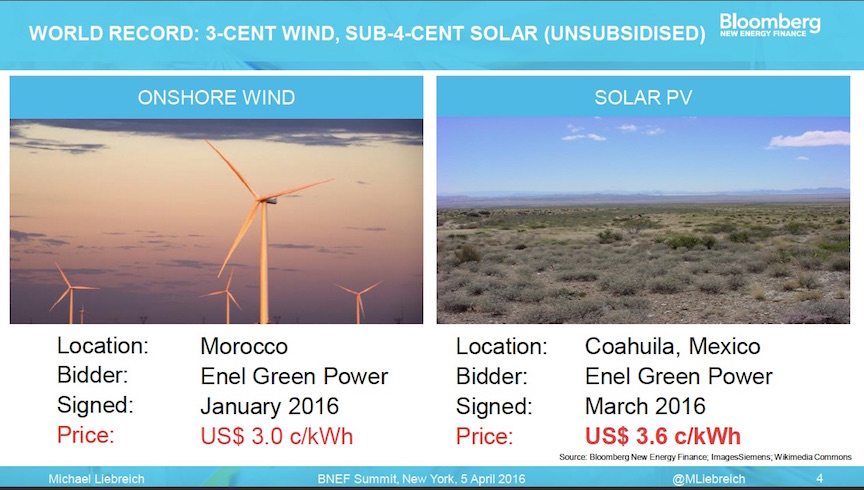
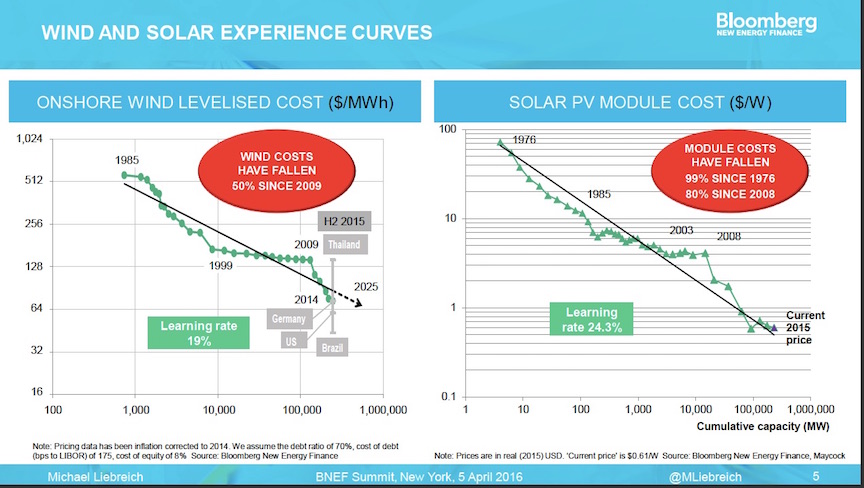
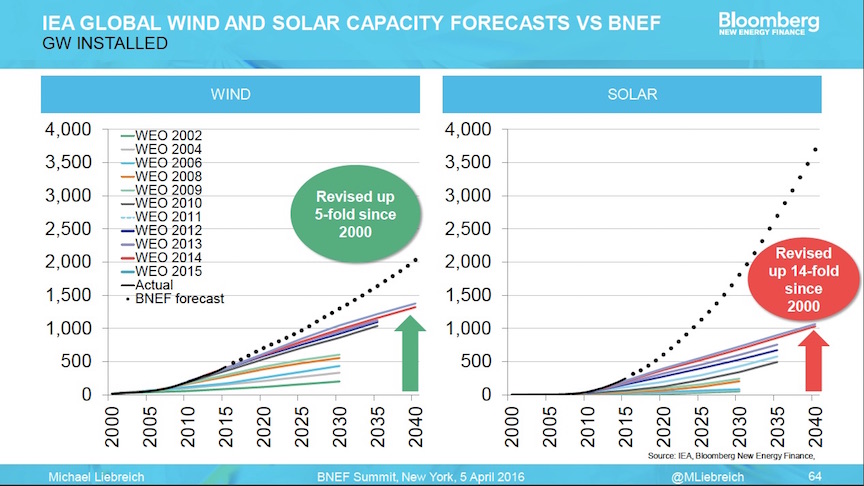
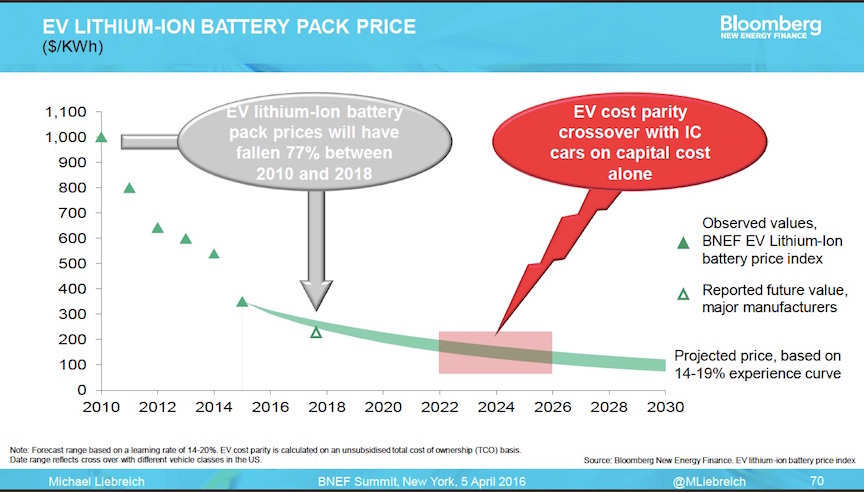
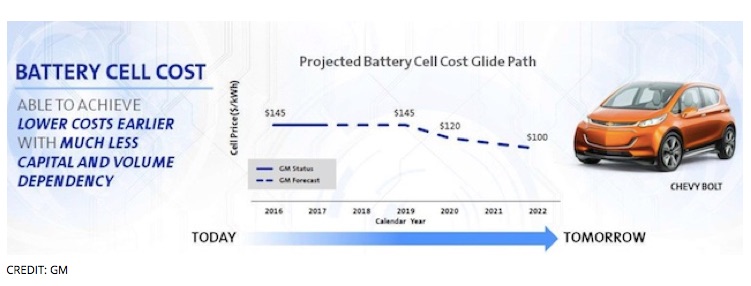
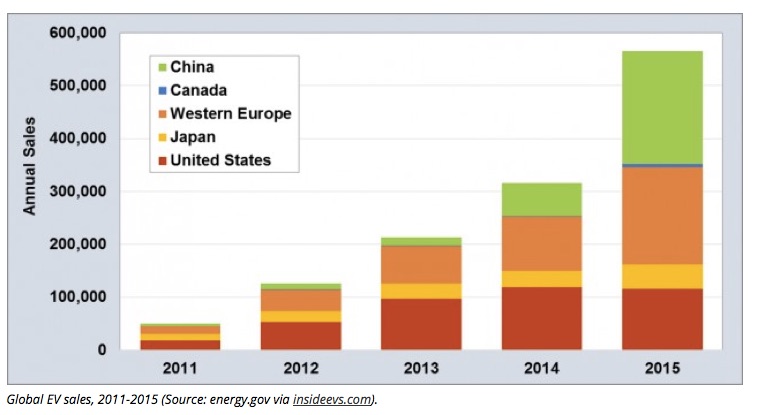
No comments yet, add your own below